Overview
Building large scale apps with diverse and growing features, with a large team of developers, requires a different approach than building a monolithic app amongst a small group of people. When you start out, everything seems simple and the universe is not that complex. As you keep adding more features, managing the complexity can get challenging. Making things more modular and composable is the only way forward. Additionally, given that most apps today are content-driven, you would also need dynamic updates on the App without an App-Store release.

The Business teams are always looking to add more features to stay competitive in the market. No-Code/Low-Code tools are one option that can be used to get there faster. However, as the complexity of the features increase, these tools fail to address the complexity and become cumbersome. You have to fallback on Engineering to build the complex logic in code. This is where the promise of No-Code/Low-Code starts diminishing.
Businesses need the power, flexibility and efficiency of a No-Code tool whereas Engineering needs the power of a Full-Code IDE to build complex business logic. There has to be a middle ground where we keep both parties happy.
The Genesis
Section titled “The Genesis”Born out of a need to build a large scale app that had multiple teams, multiple business verticals, with a diverse set of content-driven features, a complete rethink was required on how Mobile Apps should be built. A few things were abundantly clear to us:
- A CMS can be lot more than just a container of content. It could even be used to drive the entire App Experience. This is the No-Code companion for the business teams where there is a deliberate abstraction of the complex UI components.
- We wanted to use a Cross-platform toolkit like Flutter which has a sound type-safe language like Dart backing it. Type-safety is paramount to build safe and solid code, which is often underrated.
- We didn’t want to expose the ability to design screens to the Business. In fact, they want to stay focused on the building blocks of the page rather than how they look and behave. Some control and configuration is still required but not to the extent of setting padding, margins, border-radii, colors, layout, etc.
- Features must be built in a modular fashion and composed at the app layer. These features can be built independently by teams without impacting each other.
- Leverage the community packages instead of creating proprietary technology. This keeps the learnability-curve on the lower side, making it easier to adopt for newer members.
Taking a different approach
Section titled “Taking a different approach”Since many of the features were content-driven, the role of a CMS was pivotal. When we explored the space of headless-CMS systems, many showed up in our radar. After a fair amount of deliberation we decided to go ahead with Sanity.io 🔗. Our reasons to pick Sanity were the following:
- Has the ability to define schemas in code rather than a drag-and-drop interface of constructing content-types
- Has a fully customizable studio that can be tailored for the content authors
- Has collaborative features built into the studio
- Has a comprehensive programmatic API to create and mutate documents. This allows easy migration of content from other systems.
After we built the first feature in Sanity, we made an important discovery:
Sanity can be lot more than just a container of data. Given its flexibility, we could use it to drive our entire App Experience.
Thus began the effort to explore Sanity in more depth and build a framework to drive the App Experience from a CMS. After 4 versions of evolution, we now have a simpler model of building features, composing them on the app and a plugin-based system to integrate with third-party systems.
Presenting the Vyuh framework
Section titled “Presenting the Vyuh framework”Vyuh is a framework to build modular, scalable Flutter apps driven by a Content Management System (CMS)
Rather than thinking of your App in terms of screens of content, you make an important mind-shift: “Think of your app as a collection of features where each feature contributes a set of components”. These components could be as simple as a Button or a Card or more complex like a Payment component.
Features define all the components they expose in a manifest, which also become available on the CMS. A bootstrapping process goes through all the feature-manifests and builds a gallery of components, that are available on the CMS. With these components, business teams can now create journeys and compose pages. Since these components are at a high level, they are semantic in nature and hide all implementation details.
There is a corresponding Flutter counterpart to these components that actually contains all the implementation and aesthetic details. Inside the framework, these Flutter components will get used upon parsing the JSON payload coming from the CMS.
Divide and Conquer
Section titled “Divide and Conquer”
With this clear separation of responsibilities, we are able to offer a simple, intuitive interface to the business, via the CMS.
The CMS Studio becomes the No-Code companion.
At the same time, the engineering folks have the full power of Flutter to build the counterpart for the CMS components.
We meet in the middle with the Vyuh Framework, where the CMS components come to life via Flutter. Of course, the framework does lot more than just rendering pages from a CMS. Here is a much longer list of capabilities:
- Every feature is modular in nature and can be composed together at the App layer. Features only expose components and other aspects like actions, layouts, etc.
- Features are transferable and can be moved between a family of Vyuh-enabled apps. This works well for larger companies with a host of apps.
- Navigation is almost entirely controlled from the CMS. You also have the ability to do a fixed local navigation. This allows you to compose customer journeys on the fly and even do A/B testing.
- The content inside a page and the navigation can be conditionally controlled
- There is a stronger focus on building a Design System of components right from Day 1.
- All third-party integrations are exposed as Plugins, which are horizontal
and universally available to all features. These include:
- Analytics
- Feature Flag
- Storage
- Secure Storage
- Dependency Injection
- Routing
- Content handling from a CMS
- Ads, etc.

We are just getting started
Section titled “We are just getting started”Our first set of integrations are with:
Sanity.iofor CMSFlutterfor the rendering layerFirebasefor Authentication, Remote Config, Firestore, Realtime Database, Analytics, Performance, Crashlyticsget_itfor Dependency Injectiongo_routerfor Routinghttpfor Networking
If this sounds interesting, continue the next steps with the Get Started guide.
In Summary
Section titled “In Summary”The Vyuh Framework bridges the gap of a No-Code/Low-Code tool by separating the concerns of Business and Engineering. By taking a CMS-driven approach to constructing Flutter apps, we become more modular and scalable. The CMS becomes the No-Code companion for business, where a gallery of high-level semantic components are exposed.
The Engineering teams build features in Flutter which are counterparts of the CMS components. They get full power of Dart, Flutter and their chosen IDE to build sophisticated logic without sacrificing any of the power.
The framework becomes the balancing act where it marries the CMS content to Flutter and drives the entire App Experience.
Welcome to a new way of building Flutter Apps!
— Vyuh

